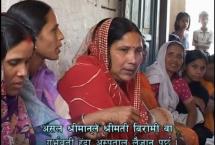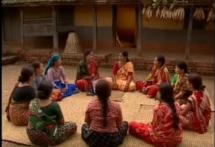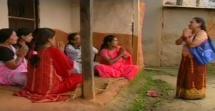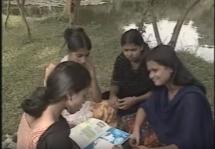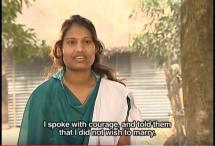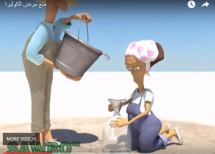Ashal Logne (Good Husband) Video on Safe Motherhood
The Nepal Family Health Program (NFHP-I) was a six-year (2002-2007) bilateral activity of United States Agency for International Development, Nepal (USAID/N) with the Government of Nepal. Its overall goal was to support the Government’s long-term goal of reducing fertility and under-five mortality within the context of the National Health Policy and Second Long-Term Health Plan 1997-2017.
Under the MNH project, a TV drama called “Ashal Logne” (Good Husband), a television drama was developed and produced by the famous artistic duo, Madan Krishna Shrestha and Hari Bansha Acharya (MAHA) to reiterate and reinforce the messages put out by SUMATA campaign on support and participation of mother in laws and husbands during pregnancy, delivery and postnatal periods. The drama also draws attention to messages on birth preparedness and complications readiness.
Ashal Logne was further rebroadcast and integrated into the local cable TV network of the 17 NFHP CPDs. The product had been very popular and received an overwhelming responses from the audiences, as a result, the products were aired free of cost through sponsorship program by various private TV channels such as Kantipur TV, Channel 1, A1, Nepal I channel and Image TV.
In the story, Gauri and Lalita are neighbors, Gauri leads a life of hardship and finds support and friendship with Lalita. “Ashal Logne” illustrates that this is not enough to sustain a happy and healthy life for a women, unless she gets support and care from her mother in law and her husband. This point is verified when Lalita who is taken care of by her family, especially during her pregnancy gives birth to a healthy baby. While Gauri, who has never received support nor been taken care of by her family continues to have miscarriages. Unfortunately, her family does not realize that, if only she was also taken better care of during her pregnancy she too could have given birth to a healthy baby.
Through these chains of event, the drama demonstrates how necessary a mother in laws and a husband’s involvements are in a women’s life, especially during her pregnancy, delivery and postnatal periods. It also shows how necessary it is to be prepared for birth and be ready for complications.
The English sub-titled version of this video can be found at the following links:
Source: Johns Hopkins Bloomberg School of Public Health/ Center for Communication Programs
Date of Publication: March 25, 2019


